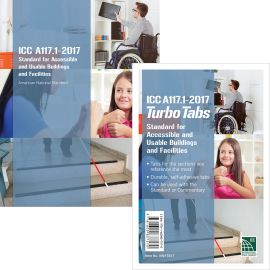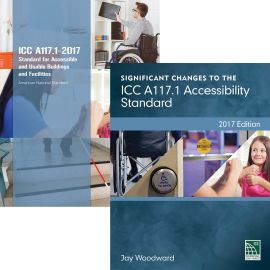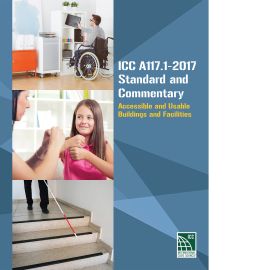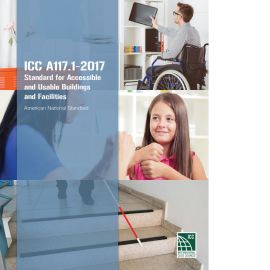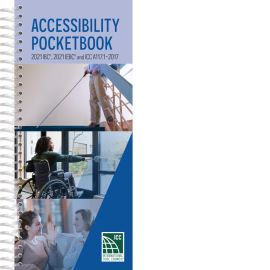This is a demo store. No orders will be fulfilled.
Significant Changes To The ICC A117.1 Accessibility Standard, 2017 Edition
When it comes to understanding the 2017 edition of the ICC A117.1 standard, there is no better tool than Significant Changes to the A117.1 Standard. This one-of-a-kind four-color resource identifies significant changes from the 2009 edition to the 2017 edition of the standard and provides the reason and rationale behind those changes. Essential for an easy transition between editions, the book's value lies in its focus, which is aimed at the most critical provisions, the most frequently used provisions, and provisions that have had a significant change in application, so that users can readily identify the need-to-know information. Each change is accompanied by a photograph, a real-world example, or an illustration, and is followed by a summary and analysis. Further enhancing this key content is the clear and deliberate labeling of each change as an addition, modification, clarification, or deletion. The end result is an indispensable resource that will familiarize building officials, plans examiners, inspectors, design professionals, and anyone in the building construction industry with the many important accessibility-related changes that have materialized in the A117.1 standard
New to the 2017 edition are enhanced dimensions for clear floor spaces and turning spaces. These increases were in response to technical data regarding the space needed by persons using scooters and some types of motorized wheelchairs. These enhanced provisions only apply to new buildings and facilities. Where existing buildings and facilities are remodeled, the historic dimensions will still apply.
Other changes include exterior routes, curb cuts, blended transitions, clarity for detectable warnings, passenger drop offs and parking requirements coordinated with the Public Rights of Way Guidelines, providing an accessible design standard for electrical vehicle charging stations and enhanced safety for accessible routes crossing parking lots. Also introduced are acoustic standards for classrooms, features allowing for better communication for persons using sign language, provisions addressing the recharging of wheelchairs in assembly venues and hotels, access to gaming machines and tables, and provisions for water bottle filling stations.
The new standard continues to provide coordination between the accessible provisions of this standard and the Fair Housing Accessibility Guidelines (FHAG) and the 2010 Standard for Accessible Design referenced by the American’s with Disabilities Act (ADA) and the Architectural Barriers Act (ABA).
| Description: Links | |
|---|---|
| Description: | Authored by Jay Woodward When it comes to understanding the 2017 edition of the ICC A117.1 standard, there is no better tool than Significant Changes to the A117.1 Standard. This one-of-a-kind four-color resource identifies significant changes from the 2009 edition to the 2017 edition of the standard and provides the reason and rationale behind those changes. Essential for an easy transition between editions, the book's value lies in its focus, which is aimed at the most critical provisions, the most frequently used provisions, and provisions that have had a significant change in application, so that users can readily identify the need-to-know information. Each change is accompanied by a photograph, a real-world example, or an illustration, and is followed by a summary and analysis. Further enhancing this key content is the clear and deliberate labeling of each change as an addition, modification, clarification, or deletion. The end result is an indispensable resource that will familiarize building officials, plans examiners, inspectors, design professionals, and anyone in the building construction industry with the many important accessibility-related changes that have materialized in the A117.1 standard. |
| Pages | 188 |
| Language | English |
| ISBN | 978-1-60983-709-9 |
| Publisher | ICC |
| Code Year | 2017 |

